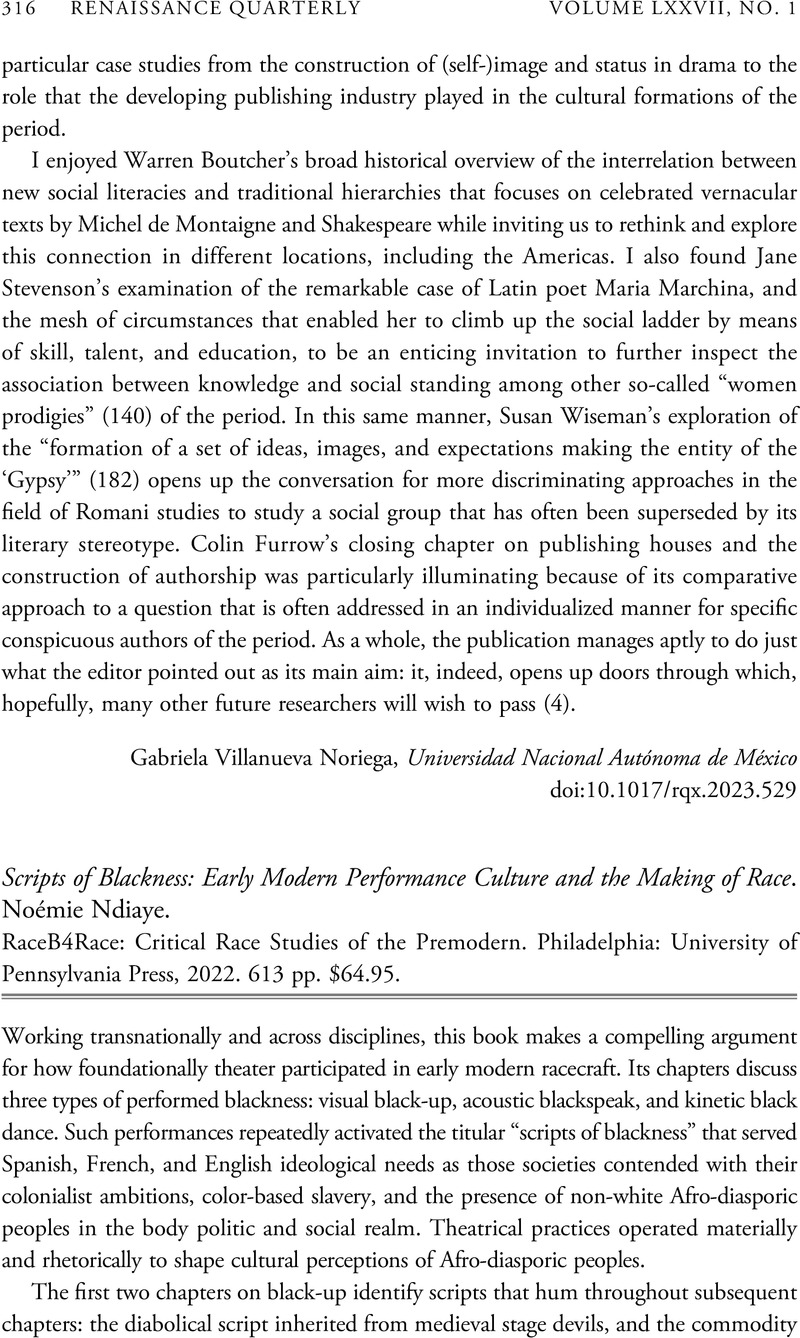No CrossRef data available.
Article contents
Scripts of Blackness: Early Modern Performance Culture and the Making of Race. Noémie Ndiaye. RaceB4Race: Critical Race Studies of the Premodern. Philadelphia: University of Pennsylvania Press, 2022. 613 pp. $64.95.
Review products
Scripts of Blackness: Early Modern Performance Culture and the Making of Race. Noémie Ndiaye. RaceB4Race: Critical Race Studies of the Premodern. Philadelphia: University of Pennsylvania Press, 2022. 613 pp. $64.95.
Published online by Cambridge University Press: 24 April 2024
Abstract
An abstract is not available for this content so a preview has been provided. Please use the Get access link above for information on how to access this content.

- Type
- Review
- Information
- Copyright
- Copyright © The Author(s), 2024. Published by Cambridge University Press on behalf of The Renaissance Society of America



